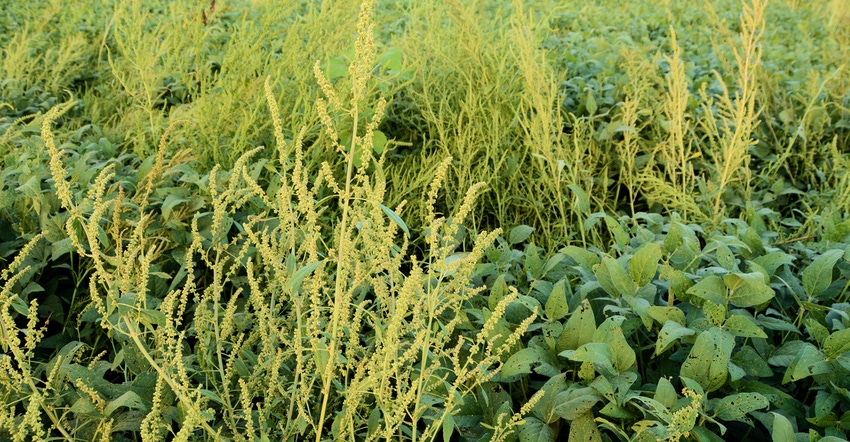
University of Illinois researchers have confirmed waterhemp is resistant to Group 15 herbicides, in trials in McLean and Champaign counties. The long-chain fatty acid inhibitors in the group are popular in preemergence herbicide applications — and every commercial product tested from the group is experiencing declining residual control.
Waterhemp is now capable of developing resistance to eight chemical modes of action, underscoring the need for Illinois farmers to consider other options for weed control, says Aaron Hager, U of I weed scientist.
He and his team found that the waterhemp in the McLean County field is resistant to five different chemical modes of action; for the Champaign County waterhemp, it’s six. Hager says Illinois farmers should be on the lookout for waterhemp that resists Group 15 herbicides even outside the two-county area.
“Let’s say you’re expecting four weeks of control and you get three weeks. Does that mean you have resistance? Not necessarily,” Hager says. “Maybe you didn’t get enough rainfall to get it [herbicide] moved into the soil solution where it needs to be.”
To be certain of the results from the field trials, the researchers duplicated tests across several years. Hager and his team found declining residual control happened consistently with waterhemp. His graduate student then spent the fall and winter replicating the results in a greenhouse. He compared resistance in waterhemp from the test plots to two other populations of waterhemp known to be susceptible to Group 15. This helped them develop resistance ratios.
They found resistance ratios ranged from fourfold to sixty-fourfold among the different Group 15 options: S-metolachlor (Dual Magnum), pyroxasulfone (Zidua), dimethenamid-P (Outlook) and acetochlor (Harness, Warrant, Degree, Surpass NXT and Topnotch).
“In terms of magnitude of resistance, metolachlor has demonstrated the most resistance. But that doesn’t mean all you need to do is switch to a different one. The problem doesn’t go away,” Hager says.
“The best thing we can do, if our strategy is chemical only, is to try to slow the evolution of resistance. We can’t prevent it. We can’t stop it. Using different modes of action is only a temporary stop,” he adds.
A new era
When asked if farmers could wait for a new active ingredient to come along, Hager says there’s “nothing coming through the pipeline.” He adds that formulations in development may not be able to deal with the metabolic-based resistance that waterhemp in the test fields developed against Group 15 products.
“These populations are able to metabolize some of these Group 15 products about as rapidly and efficiently as what corn can,” Hager says. “They metabolize the herbicide before it can cause any lethal damage.”
Historically, herbicide formulators have had to fight target-site resistance, where the herbicide can’t get into the plant. He calls metabolic resistance, which also appears in waterhemp against HPPD inhibitors, a “new era” for agriculture.
Crop rotation and tillage are two common physical practices for decreasing weed pressure in the face of rising herbicide resistance.
“What you have to do is ensure that by the end of the season, there’s no survivors that add seed to the seed bank. That’s how you beat this,” Hager says. “There’s no one tactic that works in every situation, but there are options and they’re not all chemical.”
In the end, Hager emphasizes that chemistry is not a long-term fix.
“A lot of people think now dicamba beans are the solution. Well no, they’re not the long-term solution. We’ll burn through that chemistry sooner rather than later. We’re really almost out of options,” Hager concludes.
About the Author(s)
You May Also Like




